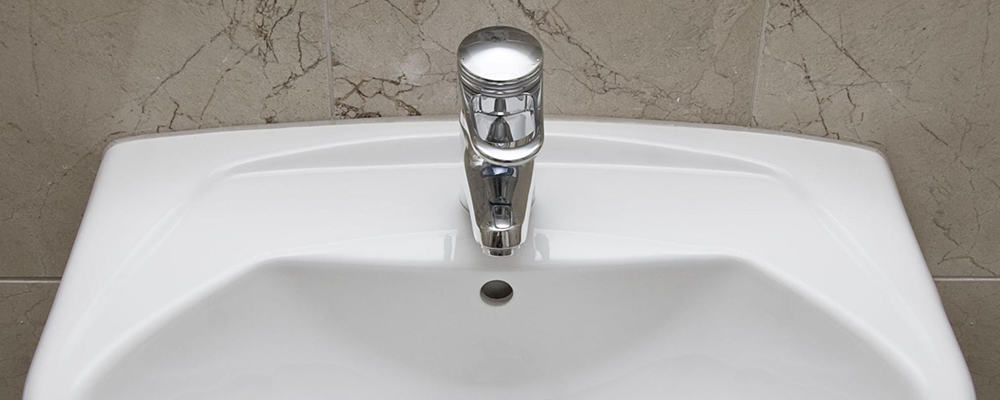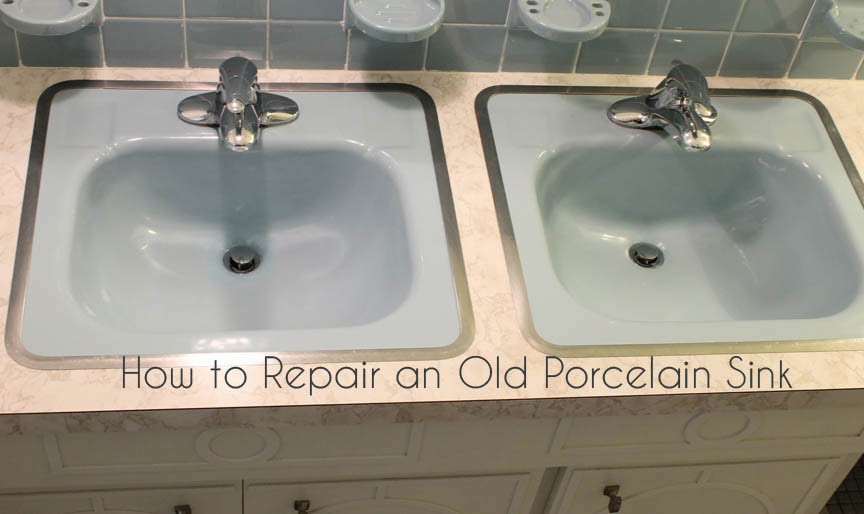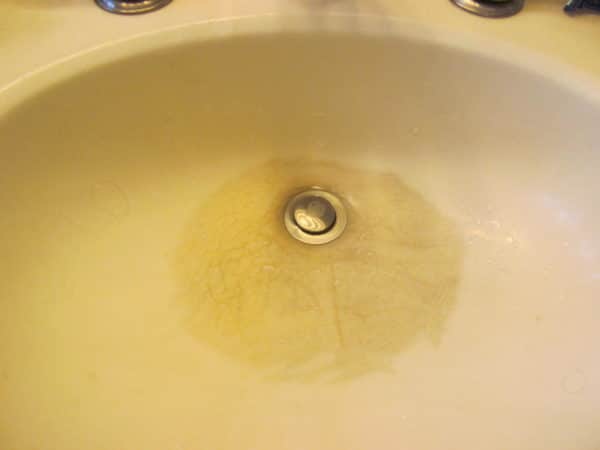Porcelain Bathroom Sink Problems:
Porcelain bathroom sinks are a popular choice for many homeowners due to their elegant appearance and durability. However, like any other fixture in your home, they can also encounter various problems. In this article, we will discuss the top 10 most common problems that you may encounter with your porcelain bathroom sink and how to troubleshoot and fix them.
Common Issues with Porcelain Bathroom Sinks
Despite being known for their durability, porcelain bathroom sinks are not immune to wear and tear. One of the most common problems that people encounter is chipping or cracking of the porcelain surface. This can happen due to heavy impact or dropping heavy objects on the sink. Another issue is staining, which can be caused by hard water or using harsh cleaning products.
Troubleshooting Porcelain Bathroom Sink Problems
Before you rush to replace your porcelain bathroom sink, it's essential to troubleshoot the problem and determine if it can be fixed. For chipping or cracking, you can use a porcelain repair kit to fill in the damaged area and make it less noticeable. For staining, try using a mixture of baking soda and water to gently scrub the surface, or you can use a mild acid-based cleaner.
How to Fix Porcelain Bathroom Sink Problems
If your porcelain bathroom sink has a severe crack or chip, it may require professional repairs. A porcelain restoration specialist can fill in the damaged area and refinish the surface to make it look like new again. However, this can be a costly option, so it's best to try DIY repair kits first. Additionally, if your sink is stained beyond repair, you may need to consider replacing it.
Preventing Porcelain Bathroom Sink Problems
The best way to deal with porcelain bathroom sink problems is to prevent them from happening in the first place. To prevent chipping and cracking, avoid dropping heavy objects on the sink and be gentle when cleaning it. For staining, use gentle cleaners and avoid harsh chemicals. Additionally, make sure to wipe down your sink after each use to prevent water spots and mineral buildup.
Porcelain Bathroom Sink Repair Tips
If you're dealing with a cracked or chipped porcelain bathroom sink, here are a few tips to help you with the repair process. Before applying the filler, make sure to thoroughly clean and dry the damaged area. Also, use a fine-grit sandpaper to smooth out the edges of the chip or crack, so it blends in better with the rest of the surface.
Dealing with Cracks in Porcelain Bathroom Sinks
Cracks in porcelain bathroom sinks can be unsightly and compromise the structural integrity of the sink. If the crack is small, you can use a porcelain repair kit to fill it in. However, if the crack is significant or extends to the edge of the sink, it's best to contact a professional for repairs or consider replacing the sink altogether.
Removing Stains from Porcelain Bathroom Sinks
Stains on porcelain bathroom sinks can be stubborn and challenging to remove. If you're dealing with hard water stains, a mixture of vinegar and water can help dissolve the minerals and make it easier to clean. For tougher stains, you can use a mild acid-based cleaner or make a paste with baking soda and water. Be sure to rinse the sink thoroughly after cleaning to prevent any residue.
Replacing a Damaged Porcelain Bathroom Sink
In some cases, a damaged porcelain bathroom sink may need to be replaced. If the damage is beyond repair or if you're looking to update the look of your bathroom, consider replacing the sink. When choosing a new sink, make sure to measure the opening and get a sink that fits perfectly. It's also a good idea to hire a professional for installation to ensure it's done correctly.
Maintaining Your Porcelain Bathroom Sink
Proper maintenance is key to preventing and minimizing porcelain bathroom sink problems. Make sure to wipe down your sink after each use and avoid using harsh chemicals or abrasive cleaners. Also, be mindful of any heavy objects on the sink and avoid dropping them. With proper care, your porcelain bathroom sink can last for many years without encountering any significant problems.
Why Porcelain Bathroom Sinks Can Be Problematic

The Durability of Porcelain
 One of the main concerns with porcelain bathroom sinks is their durability. While porcelain is known for its strength and resilience, it is also susceptible to chipping and cracking. This can be a major issue in high-traffic bathrooms, where the sink may be subject to frequent use and accidental impacts.
Porcelain bathroom sinks are especially prone to cracking along their edges, where they are most vulnerable to damage.
This can be a frustrating problem for homeowners, as it not only affects the appearance of the sink but can also lead to leaks and other functional issues.
One of the main concerns with porcelain bathroom sinks is their durability. While porcelain is known for its strength and resilience, it is also susceptible to chipping and cracking. This can be a major issue in high-traffic bathrooms, where the sink may be subject to frequent use and accidental impacts.
Porcelain bathroom sinks are especially prone to cracking along their edges, where they are most vulnerable to damage.
This can be a frustrating problem for homeowners, as it not only affects the appearance of the sink but can also lead to leaks and other functional issues.
The Maintenance and Cleaning of Porcelain
 Another issue with porcelain bathroom sinks is the maintenance and cleaning required to keep them looking their best.
Porcelain is a porous material, which means it can absorb stains and discolor easily if not properly cared for.
This can be a particular problem in bathrooms where hair dye, makeup, or other harsh chemicals may come into contact with the sink. Regular cleaning and gentle, non-abrasive products are necessary to prevent staining and keep the sink looking pristine. Additionally, certain cleaning methods, such as using bleach or abrasive scrubbers, can actually cause damage to the surface of the sink, making it more prone to chipping and cracking.
Another issue with porcelain bathroom sinks is the maintenance and cleaning required to keep them looking their best.
Porcelain is a porous material, which means it can absorb stains and discolor easily if not properly cared for.
This can be a particular problem in bathrooms where hair dye, makeup, or other harsh chemicals may come into contact with the sink. Regular cleaning and gentle, non-abrasive products are necessary to prevent staining and keep the sink looking pristine. Additionally, certain cleaning methods, such as using bleach or abrasive scrubbers, can actually cause damage to the surface of the sink, making it more prone to chipping and cracking.
Dealing with Hard Water and Scratching
 Hard water can also be a major issue for porcelain bathroom sinks, as it can cause mineral deposits and stains that are difficult to remove.
These deposits can build up over time, making the sink look dull and dirty. In addition, hard water can also contribute to scratching on the surface of the sink, which can be unsightly and make it more difficult to keep clean.
In order to prevent these issues, regular cleaning and the use of a water softener are recommended.
Hard water can also be a major issue for porcelain bathroom sinks, as it can cause mineral deposits and stains that are difficult to remove.
These deposits can build up over time, making the sink look dull and dirty. In addition, hard water can also contribute to scratching on the surface of the sink, which can be unsightly and make it more difficult to keep clean.
In order to prevent these issues, regular cleaning and the use of a water softener are recommended.
Conclusion
 While porcelain bathroom sinks can add a touch of elegance to any bathroom, they do come with their fair share of potential problems. However, with proper care and maintenance, these issues can be minimized and homeowners can continue to enjoy the beauty and functionality of their porcelain sink. By being aware of these common problems and taking preventative measures, you can ensure that your porcelain bathroom sink remains a stunning and durable addition to your home.
While porcelain bathroom sinks can add a touch of elegance to any bathroom, they do come with their fair share of potential problems. However, with proper care and maintenance, these issues can be minimized and homeowners can continue to enjoy the beauty and functionality of their porcelain sink. By being aware of these common problems and taking preventative measures, you can ensure that your porcelain bathroom sink remains a stunning and durable addition to your home.













































































